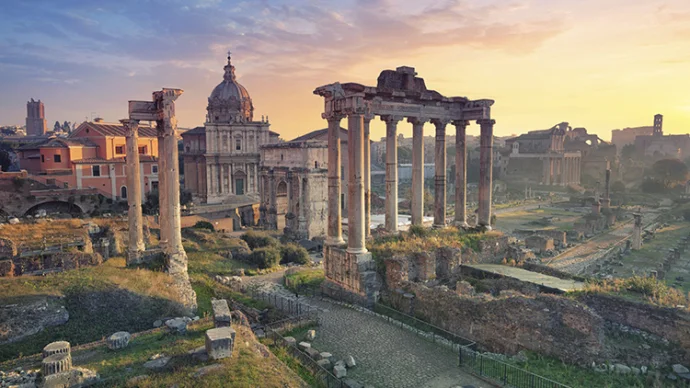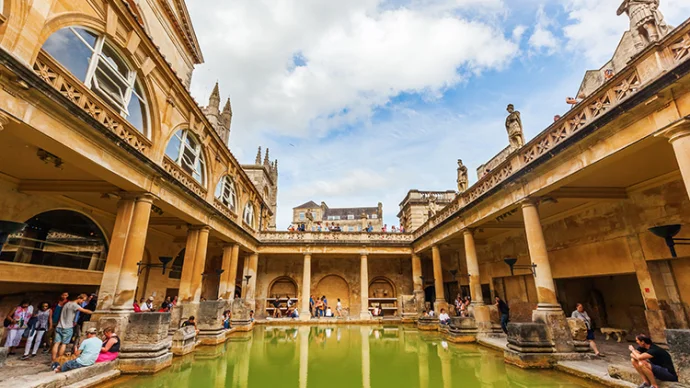
About Baths of Diocletian
Once the largest ancient baths complex in the world, the Baths of Diocletian – or Terme di Diocleziano – was built between 298AD and 306AD in honour of the Roman Emperor Diocletian. Today, they are open to the public as part of the National Roman Museum in Rome, Italy.
History of Baths of Diocletian
Set out along the traditional model of a Roman baths complex, the Baths of Diocletian contained a frigidarium (cold room), tepidarium (warm room) and caldarium (hot room or steam room) as well as additional large bathing chambers, gymnasiums, and even a library. The baths themselves were a hugely impressive building project, particularly given how swiftly they were constructed. The majority of the water for the baths was supplied by the Acqua Marcia.
The key difference with other contemporary baths was simply a question of scale – it is believed that at their height the Baths of Diocletian could hold up to 3,000 people at a time.
Given the sheer size of the Baths of Diocletian, it is no surprise that the structure did not survive intact over the centuries. However, various elements of the baths survive – some standing as grand ruins, others having been incorporated into other buildings. It can therefore be difficult at times to distinguish between the original building, restored areas and more modern constructions built within the complex.
Baths of Diocletian Today
One of the key tourist attractions for those wishing to view the baths is the Museo Nazionale Romano – Terme di Diocleziano – which is part of the Rome National Museum (shown on map, above). The museum, which opened in 1889, was built within the Baths of Diocletian and contains several collections from the ancient world. Although the museum contains many interesting exhibits, it gives little insight into the original baths themselves.
Probably the best place to view the actual structure and to get an idea as to the original scale of the Baths of Diocletian, is by viewing the well-preserved Aula Ottagona. Also part of the Rome National Museum, it contains many artefacts found during the excavation. Though currently closed except when hosting an exhibition, it is the sheer scale and preservation of the structure that impresses most .
Other areas of the Baths of Diocletian can also be explored in the nearby Basilica Santa Maria degli Angeli e dei Martiri and Church of San Bernardo alle Terme.
Getting to Baths of Diocletian
From the centre of Rome, the baths are reachable in around 5 minutes via the Viale Luigi Einaudi and Viale Enrico de Nicola roads. By car, the baths take around the same amount of time via the same route. There is also an extensive public transport system for those travelling to see the baths from different parts of the city.
Featured In

Rome Historic Sites
Explore the centre of the ancient world with our guide to the 10 key historic sites in Rome, featuring the Colosseum to the Musei Capitolini and beyond.

Roman Baths in Europe
Immerse yourself in the history of the Roman Empire at these remarkable ancient ruins of bathhouses and hypocausts across Europe.




















